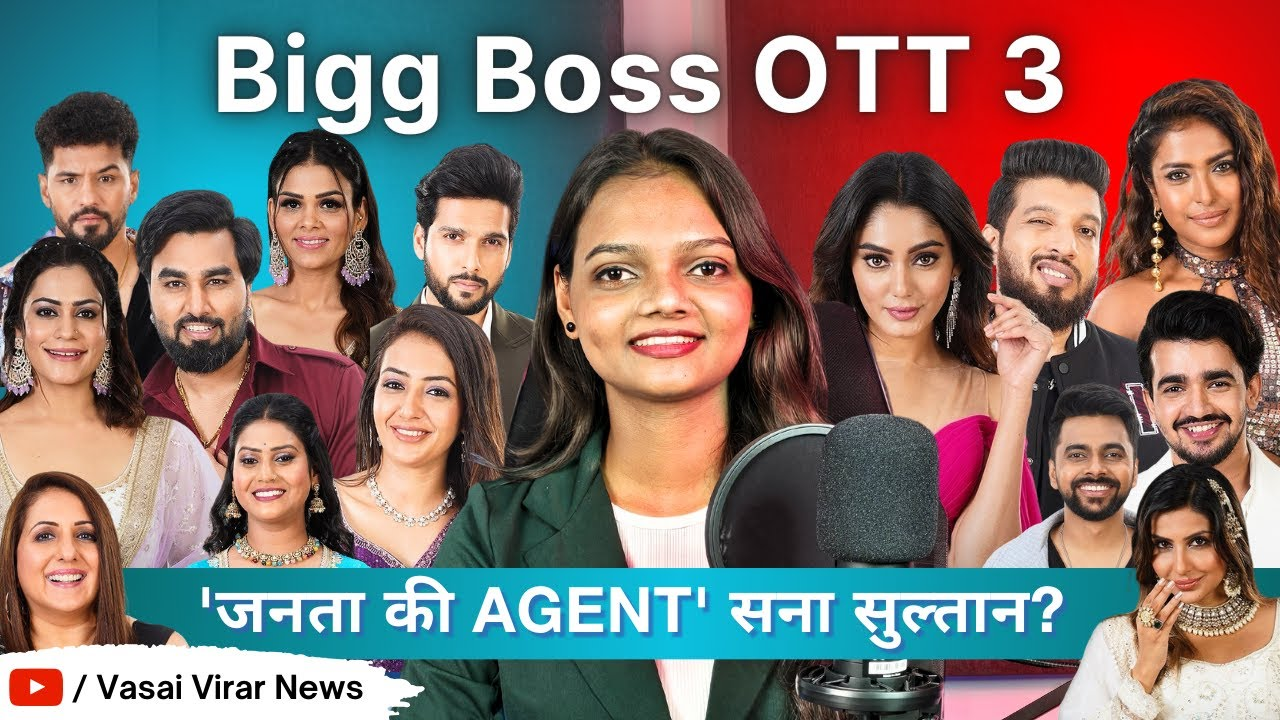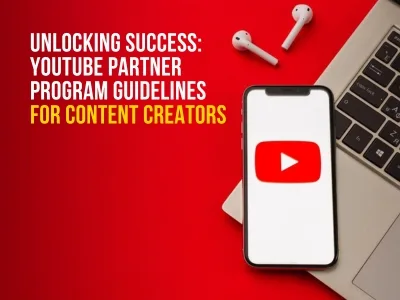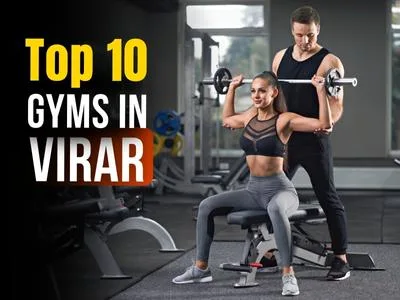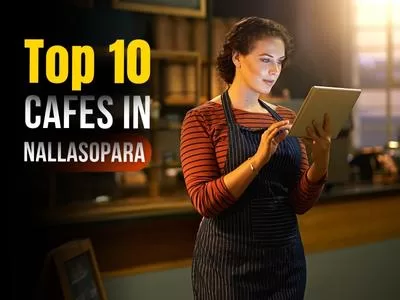The YPP has played a significant role in the success of countless content creators, transforming hobbies into full-time careers and establishing YouTube as a legitimate source of income. Recognizing the changing landscape and the need to maintain a high-quality user experience, YouTube recently announced new YouTube partner program guidelines. These updated guidelines aim to ensure a fair and supportive environment for creators while also fostering a positive experience for viewers. It is crucial for content creators to be updated about these new criteria and adjust their strategy as necessary if they want to remain competitive and successful on YouTube as the platform develops. Stay tuned as we will dive into these new restrictions and examine what they signify for the YouTube community.
New Eligibility Requirements For YouTube Partner Program
In response to the evolving needs of the platform and its users, YouTube has introduced new eligibility requirements for content creators seeking to join the YouTube Partner Program. These updated criteria focus on four key areas:
A. Channel size and watch time: To qualify for the YPP, channels must now have a minimum of 1,000 subscribers and 4,000 watch hours in the past 12 months. This threshold helps ensure that channels have a consistent audience and are actively contributing to the platform.
B. Content quality: YouTube places a strong emphasis on the quality of content being produced by its creators. To be eligible for the YPP, channels must demonstrate that they offer original, engaging, and valuable content that adheres to YouTube’s community guidelines and copyright policies.
C. Adherence to YouTube policies: Content creators must also comply with YouTube’s monetization policies, terms of service, and any applicable laws and regulations. Ensuring that creators follow these rules helps maintain a positive user experience and protects the integrity of the platform.
D. Comparison with previous requirements: The new eligibility requirements represent a shift from the previous criteria, which focused primarily on the number of subscribers and views. By incorporating watch time and content quality into the mix, YouTube aims to create a more balanced and comprehensive approach to assessing a channel’s eligibility for the YPP.
These new requirements reflect YouTube’s commitment to fostering a thriving community of content creators who consistently produce high-quality, engaging videos while adhering to the platform’s policies and guidelines. As a result, creators must now be more strategic and mindful of their content in order to meet these eligibility criteria and successfully join the YouTube Partner Program.
Youtube monetization rules
The updated YouTube Partner Program guidelines have a significant impact on content creators, presenting both opportunities and challenges as they navigate the platform’s evolving landscape.
A. Benefits of meeting new guidelines:
- Monetization opportunities: By meeting the new eligibility requirements, content creators can unlock various monetization options, such as ad revenue, channel memberships, and Super Chat. This provides creators with the potential to generate income from their content and turn their passion into a sustainable career.
- Access to YouTube resources and features: In addition to monetization, being part of the YPP grants creators access to a range of valuable resources, such as YouTube’s Creator Academy and dedicated support teams. Furthermore, creators can utilize advanced features like end screens and custom thumbnails to enhance their content and audience engagement.
B. Challenges faced by smaller channels:
- Achieving eligibility criteria: For smaller channels or those just starting out, meeting the new eligibility requirements can prove challenging. With the increased focus on watch time and content quality, creators must consistently produce engaging, high-quality content to attract and retain viewers, which may take time and effort to achieve.
- Competition with established creators: The new guidelines may also intensify competition between creators as smaller channels compete with more established ones for audience attention and engagement. To stand out, smaller channels will need to find their unique voice and niche and invest in strategies that help them grow their subscriber base and watch time.
Tips For Creators To Adapt To The New Guidelines
Adapting to the new YouTube Partner Program guidelines may seem daunting, but with the right approach, content creators can successfully navigate these changes and thrive on the platform. Here are some tips to help creators adapt:
A. Strategies for increasing watch time:
- Create engaging content: Focus on producing content that is both interesting and relevant to your target audience. Viewer retention is key, so consider using storytelling techniques and hooks to keep them engaged throughout your videos.
- Optimize video length: experiment with video lengths to determine what works best for your audience. Longer videos often generate more watch time, but only if they maintain viewer interest throughout.
- Encourage binge-watching: Create playlists and series to encourage viewers to watch multiple videos in a row, thereby increasing your overall watch time.
- Strong thumbnail and title: Grab your audience’s attention with eye-catching thumbnails and compelling titles that accurately represent your video content.
B. Producing high-quality content:
- Invest in equipment: Consider upgrading your camera, microphone, and lighting to improve the overall production quality of your videos.
- Plan and script your content: Take the time to plan and script your videos to ensure a coherent and well-structured message.
- Edit for clarity and engagement: Use video editing techniques to remove unnecessary footage, add captions, and create a polished final product that keeps viewers engaged.
- Be consistent: Establish a regular upload schedule and maintain a consistent theme or style across your videos to build a recognizable brand.
C. Staying updated on YouTube policies:
- Regularly review YouTube’s guidelines: Familiarize yourself with YouTube’s community guidelines, monetization policies, and terms of service to ensure compliance.
- Subscribe to YouTube’s Creator Insider channel: Stay informed about platform updates, policy changes, and best practices by subscribing to YouTube’s official Creator Insider channel.
- Join creator communities: Engage with fellow creators on social media or online forums, where you can share experiences and knowledge about YouTube policies and best practices.
D. Collaborating with other creators:
- Reach out to like-minded creators: Identify and connect with creators who share similar interests, goals, or target audiences to explore potential collaboration opportunities.
- Cross-promote content: collaborate on videos that can be shared across both channels, exposing your content to a wider audience and increasing the potential for subscriber growth and watch time.
- Participate in creator events: Attend YouTube or creator-specific events, both online and in person, to network with other creators, share ideas, and establish connections for potential collaborations.
By following these tips and staying adaptive to the platform’s changes, content creators can increase their chances of meeting the new YouTube Partner Program guidelines and achieving success on the platform.
YouTube’s Efforts To Support Creators
YouTube recognizes the importance of supporting its creators and has implemented various initiatives to help them succeed on the platform. Here are some of the ways YouTube supports creators:
A. Educational resources:
- The YouTube Creator Academy: This collection of free online courses helps creators learn about various aspects of YouTube, from optimizing their channels to understanding copyright guidelines. The Creator Academy offers valuable insights and best practices for content creation and promotion.
- Creator Insider channel: YouTube’s official Creator Insider channel provides regular updates, news, and tips for creators, keeping them informed about platform changes and upcoming features.
- YouTube Help Center: The Help Center offers a wealth of information on various topics for creators, such as how to monetize their channels, grow their audiences, and troubleshoot technical issues.
B. Features for audience engagement:
- Super Chat and Super Stickers: These features allow creators to monetize their live streams by enabling viewers to purchase highlighted messages and stickers during the live chat.
- Community tab: The Community tab provides creators with a space to engage with their audience beyond video content, allowing them to share updates, polls, and images with their subscribers.
- Premieres: This feature allows creators to schedule a video release and build anticipation for their content while also enabling real-time chat and interaction with their audience during the premiere.
C. Feedback and communication channels:
- YouTube Studio: The YouTube Studio dashboard offers creators important analytics and insights about their channel performance, allowing them to make informed decisions about their content strategy.
- Creator support: Creators who are part of the YouTube Partner Program have access to email and live chat support, enabling them to reach out to YouTube for assistance with any issues they may face.
- Social media and online forums: YouTube maintains an active presence on social media platforms and participates in online forums where creators can voice their concerns, ask questions, and share their experiences with fellow creators.
YouTube’s Efforts To Support Creators
I’m sorry for any confusion. Based on the search results, YouTube Shorts monetization rules include the following:
- Creators must adhere to YouTube’s advertiser-friendly content guidelines.
- Avoid using unedited clips from movies and TV shows that you don’t have the rights to be used.
- Refrain from uploading another creator’s content without adding a new perspective or transforming the content
- Don’t pay for automated or fake views.
To be eligible for the Shorts monetization program, creators must have 1,000 subscribers and meet certain view requirements. Starting February 1st, 2023, monetizing partners will be able to earn money from ads viewed between videos in the Shorts Feed.
YouTube’s Monetization Requirements For 2024
My apologies! According to the latest information, YouTube has lowered the monetization requirements for 2023 as follows:
For videos:
- 500 subscribers.
- 3 valid public uploads within 90 days.
- 3,000 watch hours in the past year.
For Shorts:
- 3 million valid public Shorts views in 90 days.
These changes make it easier for creators to access monetization tools under the YouTube Partner Program (YPP).
YouTube Shorts Monetization Rules 2024
I apologize for any confusion. Based on the latest search results, here are the YouTube Shorts monetization rules for 2024:
- Your channel has to be part of the YouTube Partner Program (YPP) and accept the updated terms.
- For channels already part of the YPP, creators have to accept these terms by July 10, 2023, in order to be eligible to monetize YouTube shorts.
- Revenue sharing on YouTube shorts started on February 1, 2023.
- The YouTube Shorts Fund is officially gone, and short-form creators are now able to earn advertising revenue through the platform.
YouTube Studio
YouTube Studio is a platform designed to help content creators manage their YouTube channels more efficiently. It is a central dashboard from which creators can access various tools and resources that help them produce, monetize, and analyze their videos. Some key features of YouTube Studio include:
- Video Manager: This tool allows creators to upload, edit, and manage their videos, including their metadata (titles, descriptions, and tags), thumbnails, and subtitles or closed captions.
- Analytics: YouTube Studio provides comprehensive analytics that helps creators understand their audience, performance metrics, and revenue generation. These insights can be used to optimize content, improve engagement and retention, and grow their channels.
- Monetization: For channels that are part of the YouTube Partner Program, YouTube Studio offers tools to manage monetization settings, track revenue, and ensure compliance with platform policies.
- Comments: Creators can manage and moderate comments on their videos, making it easier to interact with their audience and maintain a positive community.
- Channel Customization: YouTube Studio allows creators to customize their channel’s appearance, including layout, branding, and featured content.
- Copyright: The platform provides tools to help creators protect their copyright and handle any copyright-related issues, such as content ID claims or disputes.
Overall, YouTube Studio is a valuable resource for creators looking to manage their channels effectively and efficiently. It offers a range of tools that can help improve content, grow audiences, and maximize revenue opportunities.
Conclusion
In conclusion, it is crucial for content creators to adapt to new guidelines and stay informed about the ever-evolving landscape of YouTube. By doing so, they can ensure that their content remains engaging and compliant with platform requirements. Creators should be encouraged to continue producing captivating content that resonates with their audience, as this not only benefits their channel but also contributes positively to the YouTube community as a whole.
As creators adapt and grow with the platform, they help foster a vibrant and diverse online space for sharing ideas, entertainment, and information. This collaborative effort between YouTube and its content creators ultimately leads to a robust and thriving community that benefits all who participate, from creators to viewers and everyone in between.











